Q B Broxterman, InnoSyn B V, Netherlands
InnoSyn B V is a chemical process R&D organization located at the Brightlands Chemelot Campus in Geleen , The Netherlands . InnoSyn performs ‘invention’, ‘improvement’ and ‘implementation’ R&D services for its customers and strategic pa [....] » Read More


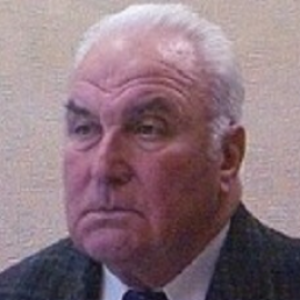
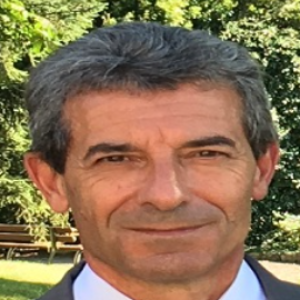





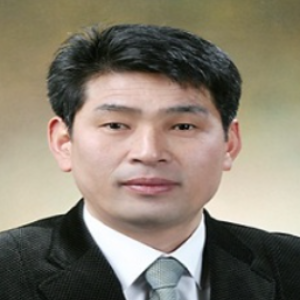





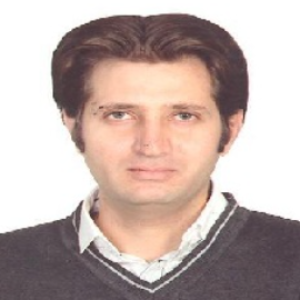
















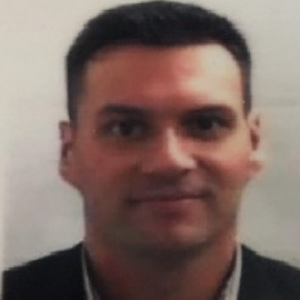













Title : Functionalization of porous materials for application in environmental catalysis for protection of environment
Stanislaw Dzwigaj, Sorbonne University, France
During my plenary lecture a functionalization of porous materials with transition metals such as Co, Fe, Ni and Cu will be discussed and obtained materials will be characterized with different physical techniques at the molecular and macroscopic levels. The porous materials wi [....] » Read More
Title : Catalysis in/on water: Future perspectives
Christophe LEN, Chimie ParisTech, France
The design of environmentally friendly methodologies has been the driving force of scientists in recent years. In particular, the use of biomass-derived materials, green solvents and alternatives techniques has been investigated. In this presentation, several green chemistry [....] » Read More
Title : Fully integrated biotransformations in a microreactor
Bruno Zelic, University of Zagreb, Croatia (Hrvatska)
Nowadays, microreactors are finding more and more applications in different fields of chemical and pharmaceutical industry, biotechnology and medicine. The application of different microreactor systems in intensification of the biochemical production processes is widely studied. [....] » Read More
Title : Fluorous ponytails in catalysis
Jan Cermak, Institute of Chemical Process Fundamentals of the CAS, v.v.i., Czech Republic
Fluorous chemistry started in 1994 after publication of the seminal paper by József Rábai and István Horváth in Science. Despite being introduced as a tool for catalysis, it later developed also into powerful instrument of organic chemistry. To return [....] » Read More
Title : Effect of temperature on Cr promotion of Mo2C supported on sulfated Zirconia for methane dehydroaromatization
James J Spivey, Louisiana State University, United States
The shale gas revolution has made immense and previously unattainable resources of natural gas accessible and economically competitive. A major component of natural gas is methane, which is typically used for power generation or is flared. Methane dehydroaromatization (MDHA) is a [....] » Read More
Title : In situ studies of model catalysts for heterogeneous catalysis
Hans O A Fredriksson, Syngaschem BV, Netherlands
Catalysis research is complex and multidisciplinary in its nature. The performance of an industrially used catalyst is determined by a multitude of factors, from material composition to oxidation state, support porosity, reactant and product distribution in the reactor as well as [....] » Read More
Title : Electrocatalytic conversion of organic compounds at solid/liquid interface from Ab Initio molecular dynamics simulations
Mal Soon Lee, Pacific Northwest National Laboratory, United States
Electrocatalytic conversion of biomass derived feedstocks offers a promising avenue for effective carbon recycling from renewable energy resources. To retain economic viability of this target technology, rational design of electrocatalysts with high activity and selectivity towar [....] » Read More
Title : Overview of radioactive cesium removal from nuclear wastes
Changhyun Roh, Korea Atomic Energy Research Institute, Korea, Republic of
After the Fukushima Daiichi Nuclear Power Plant disaster in Japan in 2011, the demand drastically increased for efficient technology for the removal of radioactive cesium. Many researchers have suggested using physical adsorption methods to remove radioactive cesium from contamin [....] » Read More
Title : Hybrid catalysis: A new one-pot reactor for the valorisation of glycerol through heterogeneous and enzymatic catalysis
Myriam Frey, LGPC (Lyon), France
After obtaining a Life Science bachelor’s degree specialized in Chemistry and Biology (2010), followed by a Master’s degree in Green Chemistry (2012) in Strasbourg University. For my PhD degree in Chemical Engineering (2012-2016), I studied the optimization of an open [....] » Read More
Title : Metal based electrocatalysts on CeO2/carbon, Nb2O5/carbon and carbon: Synthesis, characterization and investigation of their electrocatalytic activities for both anodic and cathodic fuel cell reactions
Virginija Kepeniene, Center for Physical Sciences and Technology, Lithuania
A fuel cell is electrochemical cell that converts chemical energy into electrical energy without intermediate of mechanical links. Fuel cells are different from batteries in requiring a continuous source of fuel and oxygen (usually from air) to sustain the chemical reaction, so i [....] » Read More
Title : The Nanomaterials application for syngas processing
Kulikova Maya Valerevna, A.V.Topchiev Institute of Petrochemical Synthesis, RAS, Russian Federation
In recent years, nanoscale metal-contaning materials as catalysts for the syngas processing have increasingly garnered the interest of the researchers. The syngas processing (hydrocarbon synthesis from carbon monoxide and hydrogen) is a second stage of the most recycling processe [....] » Read More
Title : Efficient CO2 hydrogenation to straight chain olefins over simple and robust alkali promoted Fe catalysts
Linga Reddy Enakonda, King Abdullah University of Science and Technology (KAUST), Saudi Arabia
Use of carbon dioxide for the production of fuels and chemicals, which is widely emitted from fossil fuels on earth atmosphere and responsible for the greenhouse gas effect. Currently, utilization of carbon dioxide (CO2) to various chemicals using homogeneous, heterogeneous, phot [....] » Read More
Title : Zirconium containing ionic materials as catalysts for C3, C4 alcohols conversions
Mikhalenko Irina Ivanovna, RUDN University, Russian Federation
Zirconium containing ternary phosphates Na(Cs)1-2xMxZr2(PO4)3 (NASICON-family) and ternary oxides (vismuth vanadates Bi4V2–2xZr2xO11–δ of perovskites family) in investigated series of compositions are studied for the vapor-phase selective dehydration and d [....] » Read More
Title : Catalytic reduction of hazardous nitroaromatic groups
Halit Cavusoglu, Selcuk University, Turkey
In recent years, green chemistry has gained significant attention to overcome the issue relating to the environmental contamination encountered by the worldwide population. The processes that prevent the use of organic solvents to convert harmful organic waste into low toxicity, [....] » Read More
Title : Upgrading of furaldehydes via hydroxymethyration over heterogeneous acid catalyst
Shun Nishimura, Japan Advanced Institute of Science and Technology, Japan
Catalytic transformations of biomass resources towards value-added fuels/materials have attracted many research groups because the utilizations of these resources can contribute to the low CO2 emission on the basis of carbon neutral concept and are sustainable/renewable. Recently [....] » Read More
Title : Carbon nanotubes with tunable properties towards the design of efficient water denitration catalyst
Sanja Panic, University of Novi Sad, Syrian Arab Republic
Since their discovery in 1991, the unique tubular morphology of carbon nanotubes (CNTs) represents a great research challenge for many scientists over the world. The possibility of using different types of CNTs as catalyst support is still under extensive exploration. The process [....] » Read More
Title : Ni2+ and Ni+ counterions in MFI zeolite as single and multiple coordination sites for small molecules
Elena Zdravkova Ivanova, Bulgarian Academy of Sciences, Bulgaria
A relatively new field in heterogeneous catalysis is aiming at developing catalysts formulation where platinum group metals are replaced by more abundant and cheap 3d base metals for industrial and environmental adsorption and catalytic applications. An important requirement for [....] » Read More
Title : Iron hydroxide-based adsorbent: A case study in removing of H2S from biogas
Edoardo Magnone, Dongguk University, Korea, Republic of
Methane (CH4) - an important energy source - is the main component of the biogas generated in a Landfill-Based Anaerobic Digestion (LBAD) process but its use in practice is still dependent upon the presence of hydrogen sulfide (H2S). This study was aimed to evaluate the H2S remov [....] » Read More
Title : Composite thin films based on ZnO - carbon derivatives for photocatalytic applications
Dana Perniu, Transilvania University of Brasov, Romania
Now-a-days photocatalysis is widely recognized as efficient for pollutants removal, but the largescale application still face challenges. One of the most prominent challenges is the use of photocatalysts (e.g. TiO2, ZnO, etc.) that are activated under UV radiation, which implies [....] » Read More
Title : Fabrication and characterization of perovskite catalyst for oxygen removal in landfill gas (LFG)
Jung Hoon Park, Dongguk University, Korea, Republic of
In recent years, the purification of landfill gas (LFG) to produce pipeline-quality gas has attracted increased research interest also due to its crucial role in producing energy or other products. At present, the vast majority of catalytic deoxygen catalyst materials for the red [....] » Read More
Title : Formation of catalytic active cites in copper modified Ce-Mn mesoporous oxides for ethyl acetate total oxidation
Radostina Nikoaleva Ivanova, Bulgarian Academy of Science, Bulgaria
Volatile organic compounds (VOCs) are recognized as major contributors to air pollution due to their toxicity to human health and the formation of photochemical smog. Nowadays, the increasing political, social and economic attention on the environment and the quality of life has [....] » Read More
Title : Hydrogen evolution over Gallium oxynitride prepared from Gallium oxide hydroxide under visible light irradiation
Yuma Kato, Osaka City University, Japan
We study water splitting reactions using solid photocatalysts. It is well known that only 6% or less energy of sunlight is given by UV light, while more than 50% by visible light. Therefore, it is important to prepare photocatalysts driven by the visible light for the efficient u [....] » Read More
Title : Graphene Oxide supported Tio2 nanocomposites
Ayse Neren Okte, Bogazici University, Turkey
TiO2 is the most extensively used photocatalysts in the advance oxidation processes owing to their complementary psychochemical properties, low cost, non-toxicity and high efficacy. However, poor adsorption capacity, formation of rapid aggregates in suspension systems and recycli [....] » Read More
Title : CaAg2 as catalyst precursor for ethylene epoxidation
Antonyshyn Iryna, 1Max-Planck-Institut für Chemische Physik fester Stoffe, Germany
Ethylene oxide (EO) is one of the target products for chemical industry. The supported and promoted silver is nowadays used as catalyst for ethylene epoxidation process using molecular oxygen. In order to enhance the selectivity towards ethylene oxide instead of thermodynamically [....] » Read More
Title : Comparative study of self-cleaning properties of TiO2, ZnO-based photoactive materials
Aida Rudakova, Saint-Petersburg State University, Russian Federation
Self-cleaning materials have considerable attention for both their unique properties and practical applications in energy and environmental areas. Self-cleaning properties of such materials include photocatalytic activity, ability to photoinduced superhydrophilic transition, and [....] » Read More
Title : Mechanism of water oxidation and reversible proton dissociation on aquo-bridge between Ru(II) centres on dinuclear complexes
Shunsuke Watabe, Niigata University, Japan
The ruthenium(II) complexes with polypyridyl ligands have been extensively studied due to the unique photochemical and photophysical properties and known to work as water oxidation catalyst. We have already reported dinuclear ruthenium(II) complex chelated by 5-phenyl-2,8-di(2-py [....] » Read More
Title : Synthesis and photocatalytic activity of CoFe2O4/Reduced graphene oxide nanocomposites
Kun Yauh Shih, National Pingtung University, Taiwan
To eliminate organic pollutants, the Photo-Fenton reaction is an advanced approach. Graphite oxide was prepared through modified Hummers method in this study. By microwave assisted method, cobalt ferrite/reduced graphene oxide composites were synthesized. The chemical structure a [....] » Read More
Title : Size control of Ruthenium nanoparticles in Ruthenium/Carbon composites derived from metal-organic frameworks
Moo Whan Shin, Yonsei University, Korea, Republic of
In order to utilize catalytic activities efficiently, while using minimum amount of catalysts, various synthetic methods have been attempted by deposition of catalytic nanoparticles onto a porous or/and conductive support. In the case of platinum, which is the most commonly used [....] » Read More
Title : Synthesis of Rice-Ear-Shaped Cu dendrites by Galvanic displacement
Jong Hyun Lee, Seoul National University of Science and Technology, Korea, Republic of
Rice-ear-shaped Cu dendritic particles were fabricated through fast galvanic displacement reactions for 3–5 min under ambient conditions by adding Zn particles into an aqueous electrolyte without chlorine ions. The Cu dendritic particles had a small average size (4.44 μm [....] » Read More
Title : Catalytic H2O2 production via water oxidation by a dinuclear ruthenium complex
Yuuki Tanahashi, Niigata University, Japan
Artificial photosynthesis has attracted attention as one of solutions to energy and environmental problems. A catalyst for water splitting into hydrogen and oxygen in artificial photosynthesis is important to be developed. In this context, much effort has been paid for developmen [....] » Read More
Title : All-atom molecular dynamics of a ternary mixud of phospholipids
Efrain Urrutia Banuelos, Universidad de Sonora, Mexico
Since the formalization of the lipid raft concept in 1997, there has been a lot of controversy about the existence of this elusive raft. This is because seeing is believing and we can not elucidate it for direct methods due to its spatial and time scale. However, some indirect me [....] » Read More
Title : A novel, low cost material for automotive catalysis
Alexander Dennis James, University of Leeds, United Kingdom
Catalytic processing of vehicle exhaust emissions to reduce their impacts on air quality currently requires large quantities of expensive Platinum Group Metals (PGMs). Whilst technologies for oxidation of CO are relatively mature, new materials capable of catalysing the reduction [....] » Read More
Title : Pd/DNA as highly active and recyclable catalyst of Suzuki-Miyaura coupling and aminocarbonylation. XPS investigation
Wlodzimierz Tylus, Wroclaw University of Science and Technology, Poland
Palladium is common known as best catalyst in the Suzuki–Miyaura and carbonylative coupling reactions due to its very high efficiency. Despite this, searching for new palladium catalysts is still a challenge. Not only complexes but also palladium nanoparticles (Pd NPs) shou [....] » Read More
Title : Terminology spectrum analysis of natural-language chemical documents: Application on catalysis
Andrey O Kuzmin, Boreskov Institute of Catalysis SB RAS, Russian Federation
This study is devoted to a methodology for automatic extraction of a complete set of ‘term-like phrases’ and to create a terminology spectrum from a collection of natural language PDF documents in the field of chemistry and catalysis. The ‘term-like phrase&rsquo [....] » Read More
Title : Application of solution plasma method to preparation of Ag loaded Ga2O3 photocatalysts
Tomoko Yoshida, Osaka City University, Japan
Reduction of carbon dioxide (CO2) with photocatalysts, an artificial photosynthesis, has been widely studied from the viewpoints of contribution to the energy, environmental and carbon resource issues. The photocatalytic reduction of CO2 with water is one of the most challenging [....] » Read More
Title : Oxidative carboxylation of 1-decene
Raiedhah Alsaiari, Najran University, Saudi Arabia
This work reports a direct route for the synthesis of cyclic carbonate starting from terminal alkene, which avoids the preliminary synthesis and isolation of terminal epoxide. A catalyst system consisting of Au/support, tetrabutylammonium bromide (Bu4NBr) and zinc bromide (ZnBr2) [....] » Read More
Title : Synthesis and characterization of bimetallic Ce Zr based UiO-66 and MOF-808
Michalina Stawowy, Wrocław University of Science and Technology, Poland
Metal Organic Frameworks (MOFs) are relatively new group of porous, crystalline materials with three - dimensional structure. They are composed of metallic cluster connected with organic ligand. The UiO-66 and MOF-808 (both containing Zr) have excellent chemical, thermal and mech [....] » Read More
Title : Particle interactions during solar TiO2 photocatalytic treatment of organic matter
Ayse Hazal Pekcan Cetin, Bogazici University, Turkey
Metal oxide nanoparticles have been used in several systems as photocatalysts recently. Light initiated degradation of the organic compounds is one of the most important application of these photocatalytic systems. Photocatalytic degradation of organic compounds in waters and was [....] » Read More
Title : Highly efficient and stable catalysts based on bimetallic Au(at)Ag nanoparticles decorated clay poly (glycidylmethacrylate)
Samia Mahouche Chergui, University Paris-Est Creteil, France
Nanostructured chelatant nanocomposites are emerged as promising platforms for homogeneous immobilization and stabilization of (bi)metallic nanoparticles. In this contribution, we report the preparation, characterization and catalytic applications of a new type of hybrid nanocata [....] » Read More
Title : Photocatalytic self-cleaning WO3-rGO composite thin films for PV glazing
Maria Covei, Transilvania University of Brasov, Romania
Photocatalysis has been used not only in water and air treatment but also, increasingly, in various domains such architecture (self-cleaning glass, tiles, cement), sanitation (clean room wall paint) and the PV industry. The use of protective coatings for photovoltaic glazing repr [....] » Read More
Title : Advancements in the process and catalyst developments for Ethylene Oxide and Ethylene Glycol: Current and future prospects
Muhammad Imran Yaqub, SABIC, Saudi Arabia
SABIC is the world largest MEG producer in the petrochemical sector. Ethylene oxide (EO) is a simplest form of epoxides and due to its molecular structure, it acts as a versatile intermediate for a variety of chemicals such as; monoethylene glycol (MEG), di- and triethylene glyco [....] » Read More
Title : Zeolites synthesized from fly ash for adsorption of phenol from waste water
Borislav Zhivkov Barbov, Institute of Mineralogy and Crystallography, Bulgarian Academy of Sciences, Bulgaria
The thermal power plants, based on coals, are the main source of fly ash (FA). Depending on the type of source and the composition of the coal being burned, the components of the solid by-products could vary considerably, but all FA includes substantial amounts of silica (both am [....] » Read More
Title : Catalytic hydrothermal gasification of organic compound
Isao Hasegawa, Kansai University, Japan
Nearly many studies on gasification of organic compounds under hydrothermal or supercritical water conditions have been performed. In this study, we conducted the catalytic hydrothermal gasification of diluted lactic acid. Several catalysts were used for comparison in catalytic a [....] » Read More
Title : Composite materials based on active carbon from biomass residues and zinc oxide nanoparticles for water purification
Alexandra Mocanu, University Politehnica of Bucharest, Romania
Recent research concerning heterogeneous catalytic support for chemical synthesis or the development of new chemical compounds is governed lately by two principles: nanoparticle scale materials and sustainable materials. Using biomass residues and processes like pyrolysis and the [....] » Read More
Title : Electrochemically derived Poly-porphyrin films with electrocatalytic properties
Vladimir Ivanovich Parfenyuk, Institute of Solution Chemistry of the Russian Academy of Sciences, Russian Federation
The fundamental and applied interest in natural porphyrins and their synthetic analogues is related to the possibility of obtaining porphyrin-based materials. They have various functional properties which can vary due to the molecular interacting and substitutes. We present el [....] » Read More
Title : Photoactivity of ZnO supported MCM-41
Duygu Tuncel, Boğaziçi University, Turkey
Mesoporous molecular sieves like silica of the MCM-41 type exhibit well-ordered structure with highly controlled cylindrical channels and very narrow pore size distributions. With large specific areas, controllable pore size and homogenous structure, the material has potential ap [....] » Read More
Title : Hydrothermal synthesis of (Al)ZSM 5 and (Ga)ZSM 5 type zeolites
Totka Todorova, Institute of Mineralogy and Crystallography, Bulgarian Academy of Sciences, Bulgaria
Zeolites are crystalline aluminosilicates, composed of TO4 tetrahedra (T = Si, Al) with O atoms connecting neighboring tetrahedral, that contain pores and cavities of molecular dimensions. Many occur as natural minerals, but it is the synthetic varieties which are among the most [....] » Read More
Title : Nanostructure control of IrOx powder for highly efficient electrocatalytic water oxidation
Tetsuya Sato, Niigata University, Japan
Widespread attention has recently been paid to artificial photosynthesis as a promising energy-providing system for the future to produce green and storable hydrogen fuel. The efficiency of hydrogen generation from photoelectrochemical and electrochemical water splitting is sever [....] » Read More
Title : Influence of chemical states of doped nitrogen in NaTaO3 on photocatalytic activity for CO2 reduction
Akiyo Ozawa, Osaka City University, Japan
Reduction of CO2 in atmosphere is an important environmental issue, and photocatalytic conversion of CO2 to useful compounds like CO has been studied extensively. As Nakanishi et al. reported, NaTaO3 shows high photocatalytic activity for CO2 reduction and attracts much attention [....] » Read More
Title : Effect of surface-modified Silica/ Polyamideimide (PAI) films
Jae Young Park, Korea Institute of Industrial Technology, Korea, Republic of
Winding wire is composed of copper (Cu) core enclosed by an insulation coating layer. Specially, Polyamide-imide (PAI) of several kinds polymers has been used in various fields such as mechanical strength, electrical conductivity, high thermal stability and dielectric constant. S [....] » Read More
Title : Photocatalytic activity of surface modification of TiO2 nanoparticles
Hohyeong Kim, Korea Institute of Industrial Technology, Korea, Republic of
TiO2 is of interest for various applications such as photocatalytic, photoelectrochemical, and super-hydrophilic properties. However, TiO2 nanoparticles are very easily to agglomerate in mediums and show poor dispersion capacity in solvents, and therefore the applications of TiO2 [....] » Read More
Title : Titanium based catalyst systems for photo-catalytic CO2 reduction
Aigerim Baimyrza, Nazarbayev University, Kazakhstan
The development of facile and robust photo-catalyst to establish the photo-catalytic CO2 reduction in industrial scale firstly would considerably reduce the amount of greenhouse gases in the atmosphere; secondly, it would found a renewable source of industrially valuable compound [....] » Read More
Title : Base catalized intramolecular Cyclization of (4 hydroxybuth-2-ynyl)(3-(4-aryl)prop-2-ynyl)ammonium chlorides and intramolecular Recyclization of obtained products
Chukhajian E O, The Scientific Technological Centre of Organic and Pharmaceutical Chemistry of National Academy of Sciences, , Armenia
It was established that for Cyclization of -(4-hydroxybuth-2-ynyl)[3-(4-aryl)prop-2-ynyl]ammonium chlorides (1) in the presence of 0,2 mol of alkali per mol of initial salt, unlike of propargylyc analogs, it is necessary the heating of reaction mixture at 45-50oC duri [....] » Read More